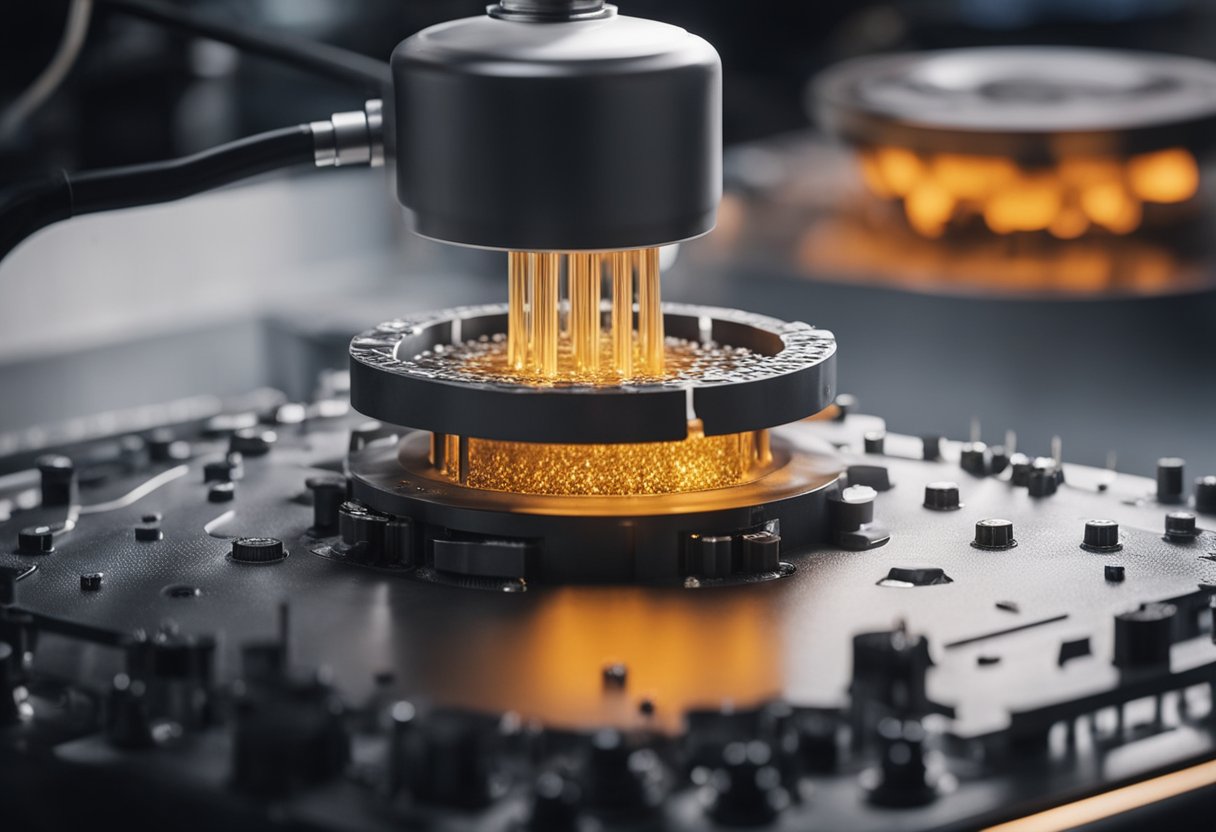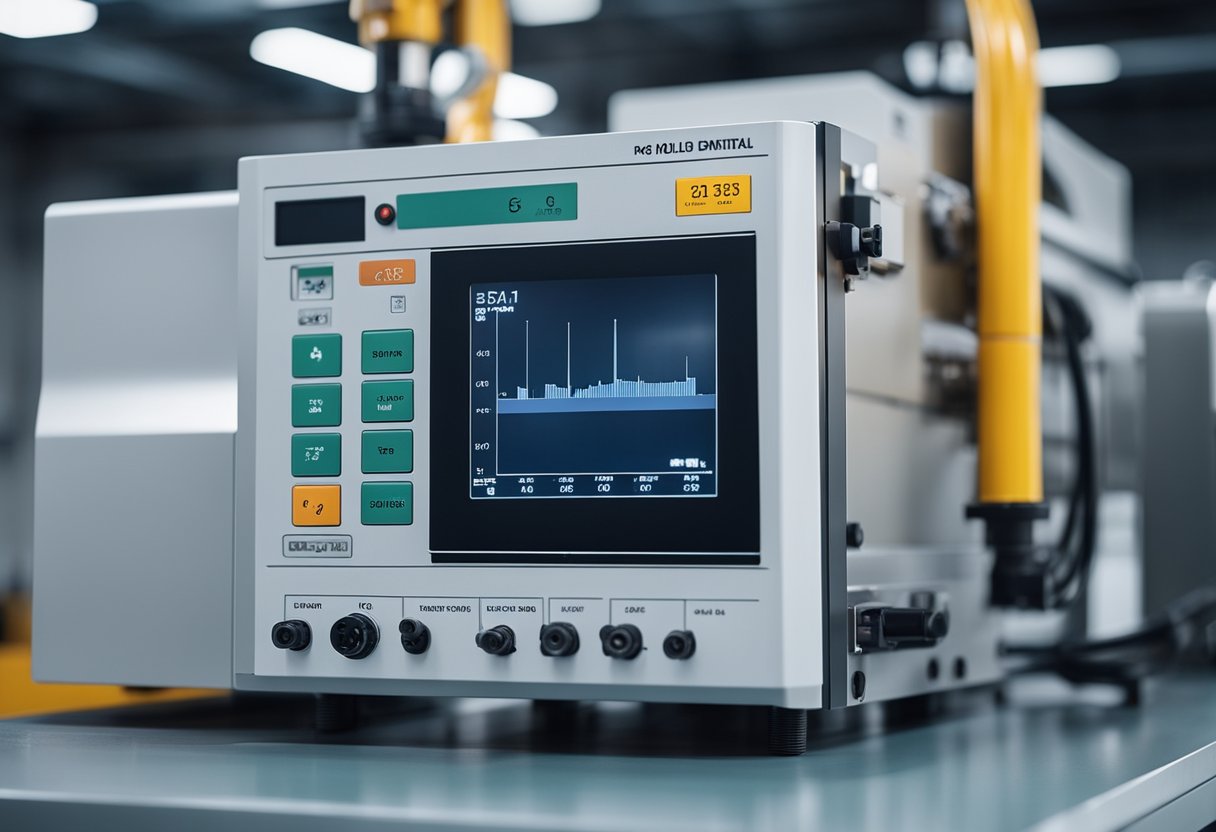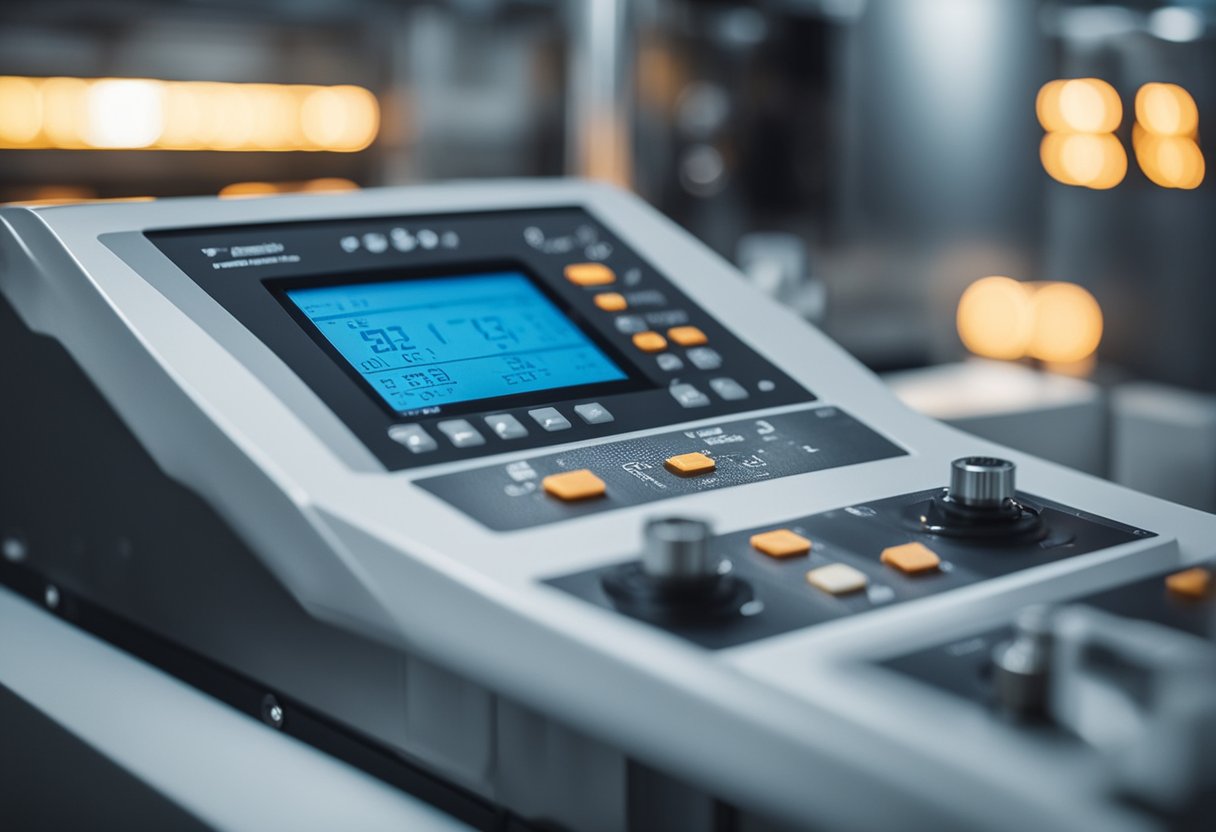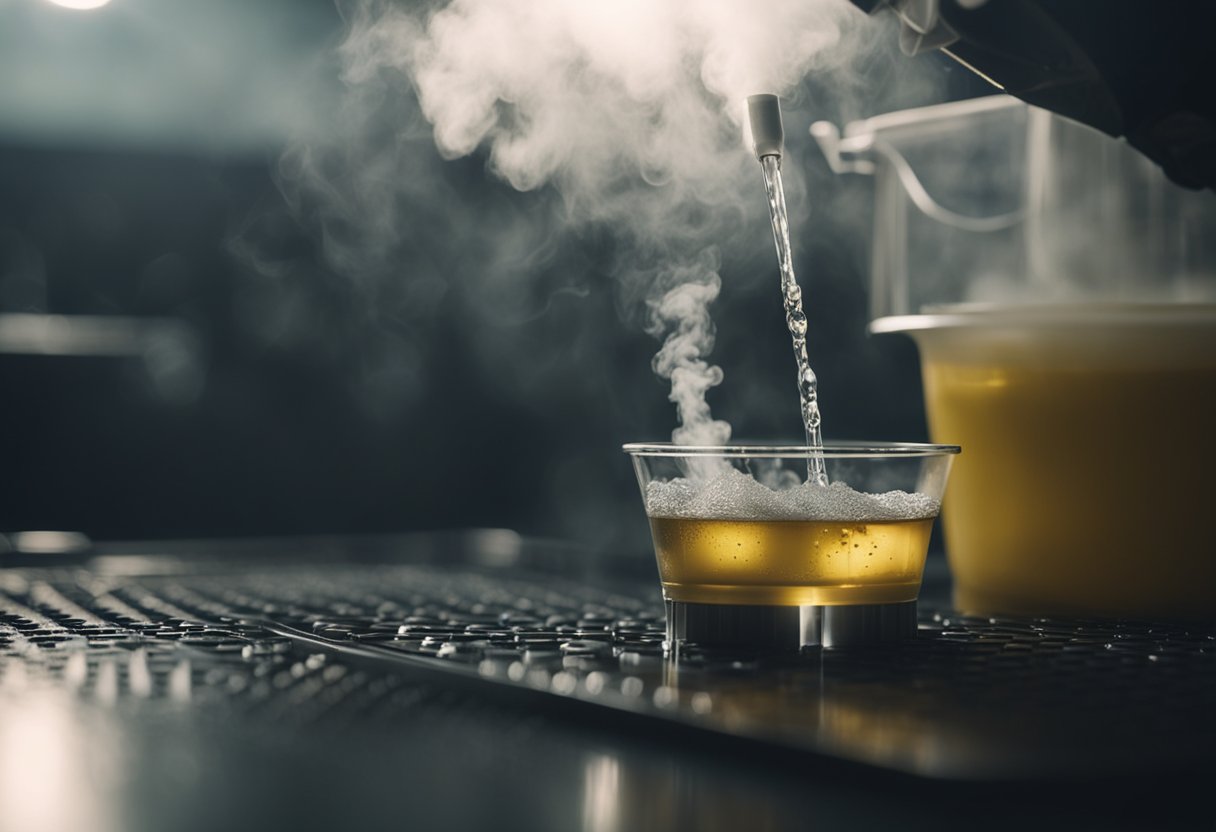If you're involved in injection molding, you know that mold temperature plays a critical role in the success of the process. Mold temperature affects the quality of the final product, as well as the efficiency of the production process. In fact, mold temperature can be a deciding factor in the success or failure of a project.

The temperature of the mold affects the cooling time of the plastic, which in turn affects the cycle time of the process. Longer cooling times can lead to slower production times, which can be costly in terms of both time and money. Additionally, incorrect mold temperatures can result in defects in the final product, which can be expensive to fix and can even lead to the scrapping of entire batches.
Fundamentals of Mold Temperature

Importance of Mold Temperature
Mold temperature plays a crucial role in the injection molding process. It affects the quality, cycle time, and cost of the final product. Mold temperature refers to the temperature of the mold surface during the injection molding process. The temperature of the mold has a direct impact on the cooling rate of the molten plastic, which, in turn, affects the quality of the final product.
Maintaining the correct mold temperature is essential to achieve consistent and high-quality parts. If the mold temperature is too low, the plastic will cool too quickly, leading to a shorter flow length, shrinkage, and warpage. On the other hand, if the mold temperature is too high, the plastic will cool too slowly, resulting in longer cycle times, higher costs, and potential quality issues.
Optimal Temperature Ranges
The optimal temperature range for the mold depends on various factors, such as the material being used, the design of the part, and the desired properties of the final product. Typically, the mold temperature ranges from 150°F to 350°F (65°C to 177°C).
Different materials have different optimal temperature ranges. For example, amorphous materials such as polycarbonate and acrylic require a higher mold temperature than semi-crystalline materials such as polypropylene and nylon. The mold temperature should be close to the crystallization temperature of the material to ensure sufficient crystallization during the injection molding stage.
Maintaining the correct mold temperature is crucial for achieving high-quality parts, reducing cycle times, and cutting costs. The optimal temperature range for the mold depends on various factors, and it is essential to choose the right temperature for the material being used and the desired properties of the final product.
Mold Temperature Control Systems

When it comes to injection molding, mold temperature control systems play a crucial role in achieving high-quality products. These systems help regulate the temperature of the mold during the injection molding process, ensuring that the final product is free of defects and has consistent quality.
Thermolators
Thermolators are temperature control units that use water or oil to regulate the temperature of the mold during the injection molding process. They are designed to maintain a consistent temperature throughout the mold, ensuring that the final product has uniform properties. Thermolators come in various sizes and capacities, making them suitable for different types of injection molding machines.
Chillers
Chillers are another type of temperature control unit used in injection molding. They work by circulating chilled water through the mold to lower its temperature. Chillers are particularly useful for molds that require low temperatures, such as those used for manufacturing products made of thermoplastics. They come in various sizes and capacities, making them suitable for different types of injection molding machines.
Temperature Controllers
Temperature controllers are electronic devices that are used to regulate the temperature of the mold during the injection molding process. They work by monitoring the temperature of the mold and adjusting it as necessary to maintain a consistent temperature. Temperature controllers come in various types, including hot runner controllers and water temperature controllers. They are designed to work with different types of injection molding machines and can be customized to meet specific requirements.
In summary, mold temperature control systems are essential for achieving high-quality products in injection molding. Thermolators, chillers, and temperature controllers are the most common types of temperature control units used in injection molding. By regulating the temperature of the mold, these systems ensure that the final product has consistent properties and is free of defects.
Effects of Mold Temperature on Injection Molding

Mold temperature is a critical parameter in injection molding that affects several aspects of the process. Maintaining the proper mold temperature is essential to ensure consistent part quality, cycle time, and material flow. In this section, we'll discuss the effects of mold temperature on injection molding, including material flow and viscosity, cycle time, and part quality.
Material Flow and Viscosity
The mold temperature directly affects the viscosity of the molten plastic material. Higher mold temperatures result in lower viscosity, which makes the material flow more easily. Lower mold temperatures result in higher viscosity, which makes the material flow more slowly. The viscosity of the material affects the filling of the mold cavity and the quality of the final product. If the viscosity is too high, the material may not fill the mold cavity completely, resulting in incomplete parts. If the viscosity is too low, the material may flow too quickly, resulting in flash or other defects.
Cycle Time
The mold temperature also affects the cycle time of the injection molding process. Higher mold temperatures result in longer cooling times, which increases the cycle time. Lower mold temperatures result in shorter cooling times, which decreases the cycle time. The cooling time is a critical part of the injection molding process, as it affects the quality of the final product. If the cooling time is too short, the material may not solidify completely, resulting in warping or other defects. If the cooling time is too long, the cycle time may be too slow, resulting in reduced productivity.
Part Quality
The mold temperature has a significant impact on the quality of the final product. Higher mold temperatures result in smoother surfaces and less shrinkage. Lower mold temperatures result in rougher surfaces and more shrinkage. The surface finish of the part is critical in many applications, and the mold temperature must be adjusted to achieve the desired surface finish. Additionally, the mold temperature must be optimized to ensure consistent shrinkage across all parts. Inconsistent shrinkage can result in dimensional variability, which can be problematic in some applications.
In summary, mold temperature is a critical parameter in injection molding that affects several aspects of the process. The effects of mold temperature on material flow and viscosity, cycle time, and part quality must be carefully considered to ensure consistent, high-quality parts.
Measuring and Monitoring Mold Temperature
To ensure consistent quality of injection-molded parts, it is essential to measure and monitor the mold temperature. There are several methods for measuring mold temperature, including thermocouples, infrared thermometers, and thermal imaging.
Thermocouples
Thermocouples are the most commonly used method for measuring mold temperature. They are small sensors that are inserted into the mold and connected to a temperature controller. Thermocouples measure the temperature at a specific point in the mold and provide accurate and reliable temperature readings. They are also relatively inexpensive and easy to install.
Infrared Thermometers
Infrared thermometers are another method for measuring mold temperature. They work by measuring the infrared radiation emitted by the mold surface. Infrared thermometers are non-contact and can measure the temperature of the mold surface without touching it. They are also quick and easy to use, making them a popular choice for measuring mold temperature.
Thermal Imaging
Thermal imaging is a more advanced method for measuring mold temperature. It uses a thermal camera to capture images of the mold surface and analyze the temperature distribution. Thermal imaging provides a more comprehensive view of the mold temperature and can identify hot spots or cold spots in the mold. However, thermal imaging is more expensive and requires specialized training to use.
Measuring and monitoring mold temperature is crucial for ensuring consistent quality of injection-molded parts. Thermocouples, infrared thermometers, and thermal imaging are all effective methods for measuring mold temperature, each with its own advantages and disadvantages.
Troubleshooting Mold Temperature Issues
When it comes to injection molding, mold temperature is a critical factor that can have a significant impact on the quality of the final product. However, mold temperature issues can arise and cause problems during the injection molding process. In this section, we will discuss some common mold temperature issues and how to troubleshoot them.
Uneven Temperature Distribution
Uneven temperature distribution is a common issue that can occur during the injection molding process. This can result in parts with inconsistent quality or defects. To troubleshoot this issue, you should start by checking the temperature of the mold at different points. Use a temperature gun to measure the temperature at various locations on the mold surface. If you notice a significant difference in temperature, you may need to adjust the mold temperature control settings.
You can also check for any obstructions or blockages in the water lines that could be preventing proper water flow through the mold. Make sure that the water lines are clean and free of debris.
Temperature Drift
Another common mold temperature issue is temperature drift. This occurs when the mold temperature changes over time, either increasing or decreasing. Temperature drift can be caused by a variety of factors, including changes in the ambient temperature, changes in the water flow rate, or issues with the mold temperature control system.
To troubleshoot temperature drift, you should first check the water flow rate and make sure that it is consistent. If the water flow rate is inconsistent, it could be causing the temperature to fluctuate. You should also check the mold temperature control system to ensure that it is functioning properly. If you notice any issues with the control system, you may need to repair or replace it.
System Failures
In some cases, mold temperature issues can be caused by system failures. This can include issues with the water lines, the mold temperature control system, or other components of the injection molding system. To troubleshoot system failures, you should start by checking the various components of the system to ensure that they are functioning properly. Check for any leaks in the water lines, and make sure that the mold temperature control system is working as intended.
If you are unable to identify the cause of the mold temperature issue, you may need to consult with an expert in injection molding. They can help you identify the root cause of the problem and recommend a solution.





